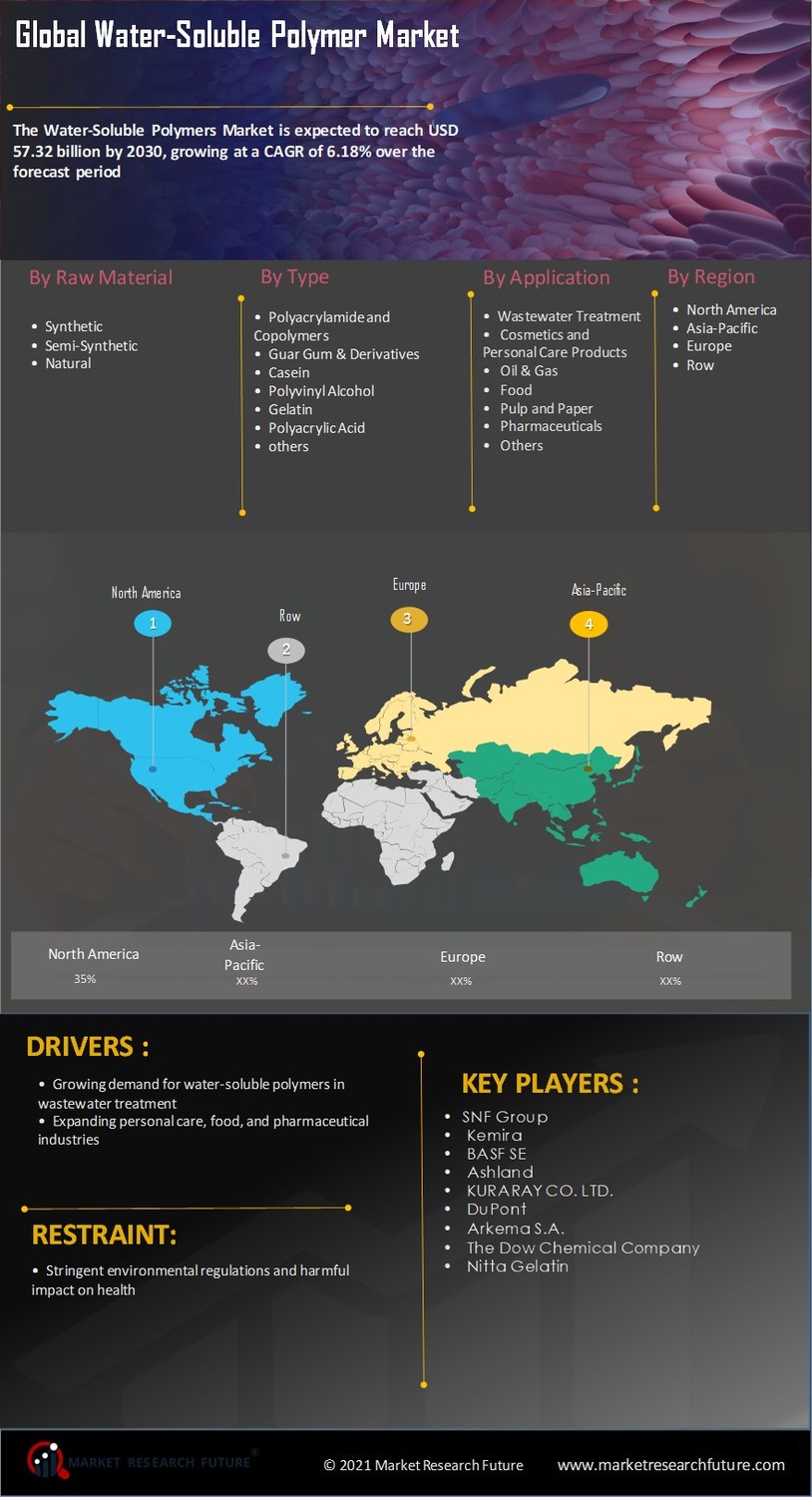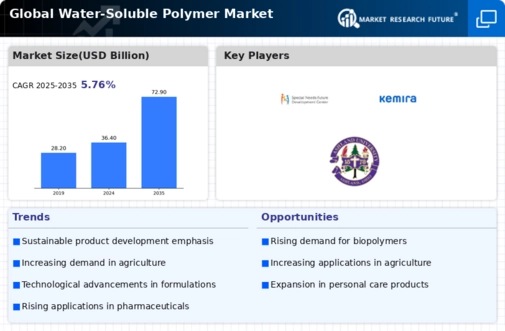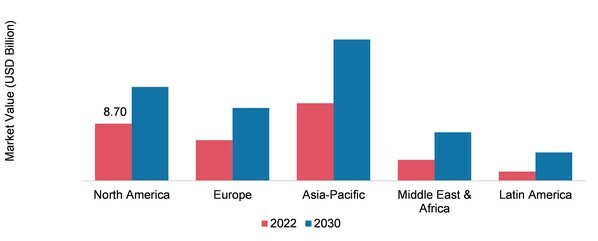Market Growth Projections
The Global Water-Soluble Polymer Market Industry is projected to experience robust growth, with estimates indicating a valuation of 36.4 USD Billion in 2024 and a potential increase to 72.9 USD Billion by 2035. This growth trajectory suggests a compound annual growth rate (CAGR) of 6.51% from 2025 to 2035. Such projections reflect the increasing adoption of water-soluble polymers across various sectors, including agriculture, healthcare, and personal care. The diverse applications and benefits of these polymers are likely to drive market expansion, positioning the industry for significant advancements in the coming years.
Rising Demand in Agriculture
The Global Water-Soluble Polymer Market Industry experiences a notable surge in demand driven by the agricultural sector. Water-soluble polymers are increasingly utilized as soil conditioners and fertilizers, enhancing water retention and nutrient delivery. This trend is particularly evident in regions where water scarcity poses challenges to crop yields. For instance, the use of polyacrylamide in irrigation practices has shown to improve soil structure and reduce erosion. As the global population continues to grow, the agricultural sector is projected to expand, contributing to the market's valuation of 36.4 USD Billion in 2024 and potentially reaching 72.9 USD Billion by 2035.
Advancements in Medical Applications
The Global Water-Soluble Polymer Market Industry is significantly influenced by advancements in medical applications. Water-soluble polymers are increasingly employed in drug delivery systems, wound dressings, and tissue engineering. These materials facilitate controlled release of therapeutics, improving patient outcomes. For example, hydrogels derived from natural polymers are gaining traction in regenerative medicine. The growing emphasis on personalized medicine and biocompatibility is likely to bolster the market, as the industry adapts to evolving healthcare needs. This sector's expansion is expected to contribute to the overall market growth, with a projected CAGR of 6.51% from 2025 to 2035.
Growth in Personal Care and Cosmetics
The Global Water-Soluble Polymer Market Industry is witnessing growth fueled by the personal care and cosmetics sector. Water-soluble polymers are integral in formulating various products, including shampoos, conditioners, and skincare items. Their ability to enhance texture, stability, and moisture retention makes them desirable in product formulations. The increasing consumer preference for high-quality personal care products is likely to drive demand for these polymers. As the global beauty and personal care market expands, the water-soluble polymer industry is expected to benefit, contributing to the projected market valuation of 36.4 USD Billion in 2024.
Emerging Applications in Food Industry
The Global Water-Soluble Polymer Market Industry is expanding due to emerging applications in the food industry. Water-soluble polymers are utilized as thickening agents, stabilizers, and emulsifiers in various food products. Their role in enhancing texture and shelf life is becoming increasingly recognized. For instance, guar gum and xanthan gum are commonly used in food formulations to improve viscosity and stability. As consumer preferences shift towards convenience foods and clean-label products, the demand for water-soluble polymers is likely to rise. This trend may significantly impact the market, aligning with the overall growth trajectory.
Environmental Regulations and Sustainability
The Global Water-Soluble Polymer Market Industry is shaped by stringent environmental regulations and a growing emphasis on sustainability. Governments worldwide are increasingly mandating the use of eco-friendly materials, prompting industries to adopt water-soluble polymers as alternatives to traditional plastics. These polymers are biodegradable and reduce environmental impact, aligning with global sustainability goals. For instance, the European Union has implemented regulations encouraging the use of biodegradable materials in packaging. This shift not only supports environmental initiatives but also drives demand for water-soluble polymers, positioning the market for substantial growth in the coming years.















Leave a Comment